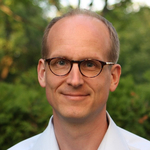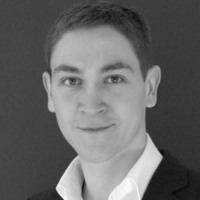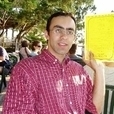Online blind deconvolution for astronomical imaging
PDF WebAtmospheric turbulences blur astronomical images taken by earth-based telescopes. Taking many short-time exposures in such a situation provides noisy images of the same object, where each noisy image has a different blur. Commonly astronomers apply a technique called “Lucky Imaging” that selects a few of the recorded frames that fulfill certain criteria, such as reaching a certain peak intensity (“Strehl ratio”). The selected frames are then averaged to obtain a better image. In this paper we introduce and analyze a new method that exploits all the frames and generates an improved image in an online fashion. Our initial experiments with controlled artificial data and real-world astronomical datasets yields promising results.
| Author(s): | Harmeling, S. and Hirsch, M. and Sra, S. and Schölkopf, B. |
| Links: | |
| Journal: | Proceedings of the First IEEE International Conference Computational Photography (ICCP 2009) |
| Pages: | 1-7 |
| Year: | 2009 |
| Month: | April |
| Day: | 0 |
| Publisher: | IEEE |
| Bibtex Type: | Conference Paper (inproceedings) |
| Address: | Piscataway, NJ, USA |
| DOI: | 10.1109/ICCPHOT.2009.5559014 |
| Event Name: | First IEEE International Conference on Computational Photography (ICCP 2009) |
| Event Place: | San Francisco, CA, USA |
| Digital: | 0 |
| Electronic Archiving: | grant_archive |
| ISBN: | 978-1-4244-4534-9 |
| Language: | en |
| Organization: | Max-Planck-Gesellschaft |
| School: | Biologische Kybernetik |
BibTex
@inproceedings{5649,
title = {Online blind deconvolution for astronomical imaging},
journal = {Proceedings of the First IEEE International Conference Computational Photography (ICCP 2009)},
abstract = {Atmospheric turbulences blur astronomical images taken by earth-based telescopes. Taking many short-time exposures in such a situation provides noisy images of the same object, where each noisy image has a different blur. Commonly astronomers apply a technique called “Lucky Imaging” that selects a few of the recorded frames that fulfill certain criteria, such as reaching a certain peak intensity (“Strehl ratio”). The selected frames are then averaged to obtain a better image. In this paper we introduce and analyze a new method that exploits all the frames and generates an improved image in an online fashion. Our initial experiments with controlled artificial data and real-world astronomical datasets yields promising results.},
pages = {1-7},
publisher = {IEEE},
organization = {Max-Planck-Gesellschaft},
school = {Biologische Kybernetik},
address = {Piscataway, NJ, USA},
month = apr,
year = {2009},
slug = {5649},
author = {Harmeling, S. and Hirsch, M. and Sra, S. and Sch{\"o}lkopf, B.},
month_numeric = {4}
}



